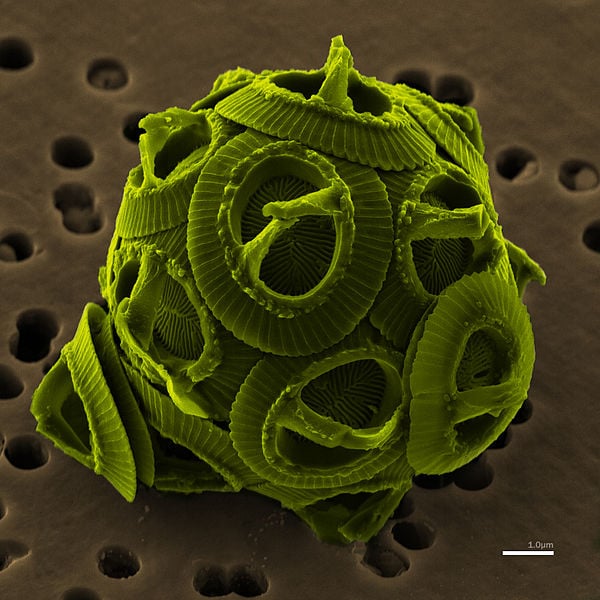Fission Stories #167
Prior to 9/11, federal regulations required U.S. nuclear power plants to be defended against radiological sabotage carried out by a small group of outside attackers aided by one insider. After 9/11, the NRC revised the regulations to required defending against a slightly larger group of outside attackers aided by one insider. At least once every three years, the NRC monitors a simulated attack on each nuclear plant by mock intruders to judge how adequately the security measures are implemented.
On May 31, 2013, outside attackers assisted by one insider disrupted the cooling water flow and forced the operators to manually shut down the Unit 2 reactor at the St. Lucie nuclear plant in Florida.
The outside attackers were algae.
Apparently, the algae staked out St. Lucie for awhile and timed their attack for a moment when workers turned off one of two cooling water pumps for maintenance. They may have been tipped off to this upcoming maintenance by the insider—the algae clammed up and aren’t talking. In any case, the algae assaulted the plant after one pump had been turned off. They clogged the screen protecting the second pump from debris.
Here’s how the insider definitely helped them. Instruments monitored the pressure on either side of the screen. When the differential pressure increased, indicating debris collecting on the screen and blocking the flow of water to the pump, a sensor automatically opened a backwash valve to allow water to be sprayed against the screen to dislodge the debris. But the insider aided his or her algae buddies by improperly installing the backwash valve. High differential pressure across the screen was detected and the backwash valve was signaled to open, but its improper installation protected the algae from the dislodging spray.
Faced with impending loss of cooling water, the operators in the control room faced little choice but to flip the switches that shut down the Unit 2 reactor within seconds.
Our Takeaway
Obviously (hopefully), the algae neither mounted a deliberate attack on St. Lucie nor was their intrusion aided by an insider deliberately sabotaging the backwash valve.
But these two unintentional acts conspired to bring down the Unit 2 reactor. It does not seem too far-fetched to think that real intruders conducting a deliberately planned attack and aided by an insider deliberately sabotaging equipment just might be able to wreak more havoc than misguided algae and a mistaken installation. In other words, what if Al-Qaeda attacked St. Lucie instead of algae?
Source: http://en.wikipedia.org/wiki/File:Gephyrocapsa_oceanica_color.jpg
“Fission Stories” is a weekly feature by Dave Lochbaum. For more information on nuclear power safety, see the nuclear safety section of UCS’s website and our interactive map, the Nuclear Power Information Tracker.

